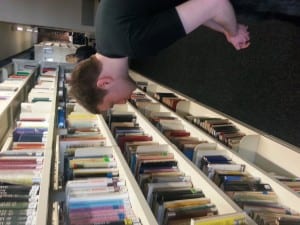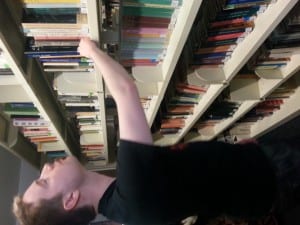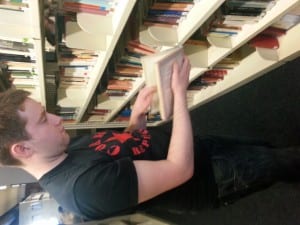Since we are all going to be performing in and around the library, I felt it only natural to write something about books. Not just what we expect from a book, but also inclusion from what we have talked about in seminars where we questioned: What is a book?
So what do we expect from a book? Many pages together to form a novel, or a collection of stories or poems, or something informative. As much as someone may want to avoid books because they don’t like reading, it is hard to avoid them as we grow up with them, we learn from them in school and they can help to shape who we are. In fact, most of us will have had one when we were babies or toddlers and had them read to us from our parents. But also at this early age, they can help us to talk and read, so books are important to us as we grow up.
Books not only help to shape who we are as we grow up, but as we have grown up, we read more and more and learn more and more from the books we read. Even from fictional books we read as teens, the books we class as teen books, can help us understand things socially, help us find ourselves at a time in our lives when we really need to find out who we are. So for me, books are incredibly important to us as humans, so that we can develop and learn.
However, if we look at books from an academic perspective, then they help us learn, but in a completely different way. They help us have an understanding of the wider world and help us form an opinion on matters we may learn about, for example, from a personal perspective on academic learning, I found this in the first lecture for another module. We were told about the politics of teaching and how the arts were basically getting kicked out, and this made me form an opinion of a matter I previously had very little knowledge of.
But as we, as a group, have explored in seminars, books aren’t just something we read, they aren’t just the stereotypical object we fine in libraries or Waterstones, but could be a plastic food box filled with marshmallows and strawberries and inspiring quotes. They can be something we listen to, or even a plastic bottle filled with facts. It’s as if you could do anything and still call it a book as a book, seemingly, could be anything. Literally anything.
Andrew Brooks


